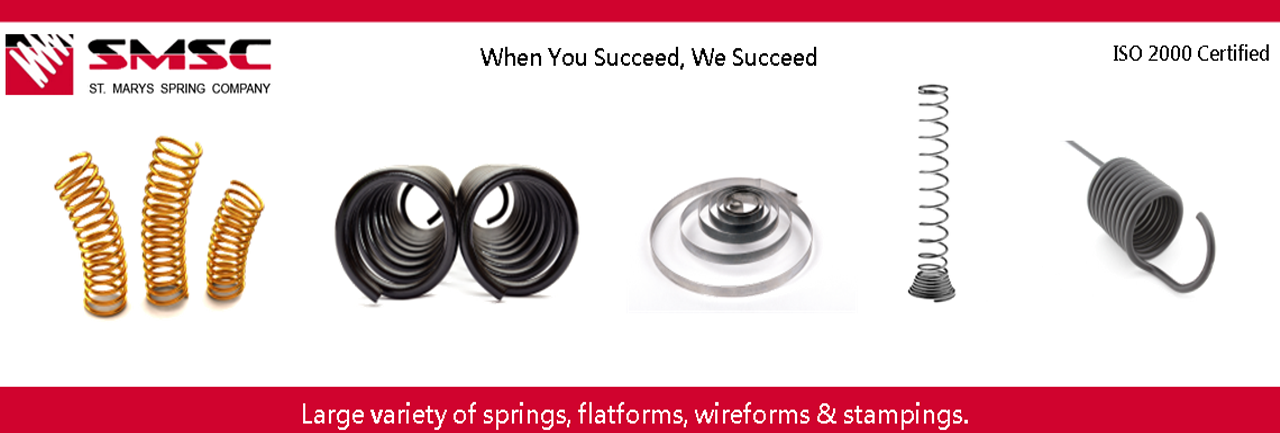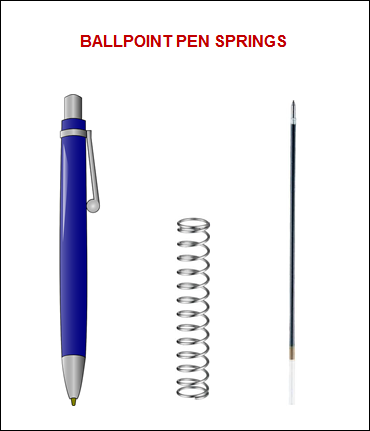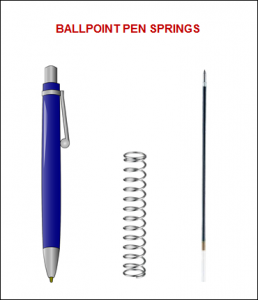Springs play an important role in the designing of any ballpoint pen, and they are offered in various dimensions and sizes. Compression springs are the type of springs, which are used in ballpoint pen. These springs are also referred to as coil springs or helical springs. Read this post to understand how the springs work in ballpoint pen. The post will also shed light upon some design tips for manufacturing spring-based ballpoint pen.
How Does a Spring-based Ballpoint Pen Work?
Every spring-based ball pen possesses a core shaft, which gets ejected from the tip by pressing a button or projection at the top. After the writing is done, the core or shaft is drawn back inside by pressing the projection again. There is a spring in the core shaft of the ball point pen. The large pressure between the paper and metallic ball causes the spring to push the metallic ball from inside of the core shaft. Hence, the metallic ball is rotated by this pressure, leaving the ink on the paper.
Design Considerations for Spring Based Ballpoint Pen
While designing compression springs used in ballpoint pen, following considerations are ought to be made:
- Outer diameter: One of the crucial considerations while designing a spring based ball pen is its outer diameter. It suggests whether the spring must be able to fit inside the “barrel” or “tube” of the pen or not.
- Inner diameter: Since the spring is not only surrounded by tubing but also placed over a shaft, the inner diameter is crucial to the design consideration. Special care must be taken in order to avoid the spring being too tight or loose around the shaft.
- Wire diameter: The wire diameter defines the relationship between the outer and inner diameter. Thus, change in the wire diameter will influence its dimensions.
- Free length: This is the distance covered by the spring, when it’s released from its state of rest, until it attains its maximum height. It also helps in calculating the working load of the spring.
- Active coils: Active coils help store and release energy. In compression spring, these coils deflect or close while in action.
- Working load: Working load of the spring is calculated by multiplying the spring rate by distance travelled. Spring rate is calculated when a certain amount of weight deflects the spring by one inch.
- Elasticity: The springs in the ballpoint pen must possess desired elasticity, which must allow the push-pin to go down and release back to its position upon its compression.
- Tight Index: The spring shouldn’t have a tight index and must have enough coils in proportion to its wire diameter and length. This makes the spring lighter and durable.


